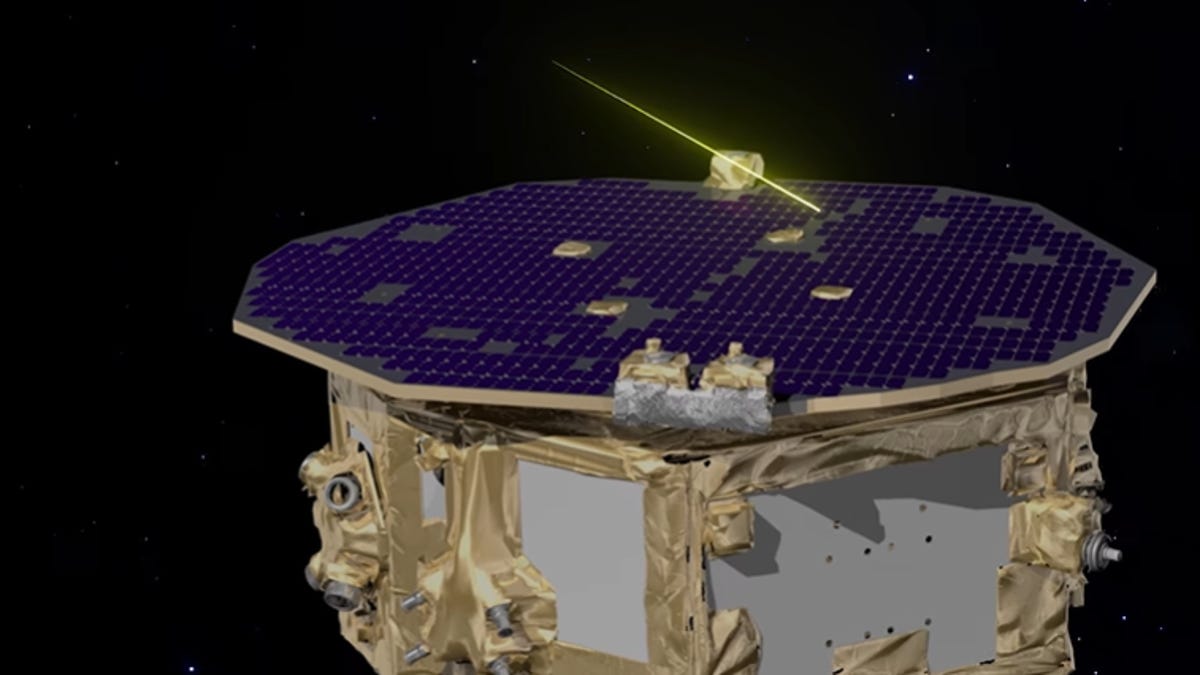Space dust slammed into an ESA spacecraft at 40,000 mph, but that's a good thing
Micrometeroids collided with ESA's expensive, proof-of-concept spacecraft, revealing the kinds of comet dust that zips around the solar system.

Micrometeroid impacts whacked the LISA Pathfinder spacecraft 54 times in over 4,000 hours of travel.
Looking into the never-ending dark of space, it's easy to think of the solar system as an empty void of nothingness. But in the inner solar system, micrometeroids, tiny specks of space dust invisible to the naked eye, fly around the Earth at speeds in excess of 40,000 mph. That presents potential hazards for spacecraft we've dropped into orbit to survey the cosmos. But just how big a problem might the microscopic dust be?
Researchers at NASA and the European Space Agency wanted to find out. Using the Laser Interferometer Space Antenna (LISA) Pathfinder, or LPF, which operated in orbit between January 2016 and July 2017, the team conducted a survey of sorts, examining how often the spacecraft was slammed by space dust.
The research, published in the Astrophysical Journal in September, details 54 collisions with the LPF spacecraft. The mission was essentially a tech demo -- the equipment included on LPF will be used in the fully functional LISA observatory. The core mission of LPF was to show the technology on board could be used for a fully fledged mission in the future. However, prior to launch, researchers realized the spacecraft's uniquely sensitive instruments could be used to detect very small impacts.
That's because every time LPF gets hit, small thrusters help it course-correct. Examining these tiny course-corrections revealed what hit it and with how much force. Researchers had access to 4,348 hours of LPF data to pore over, and they built a comprehensive data set of micrometeroid collisions with the spacecraft.
Then, modeling the impacts on LPF, the researchers were able to determine where the micrometeroids may have originated. Previous studies of the space dust in this region of the solar system have shown that much of it originates from short-period comets like 67P/Churyumov-Gerasimenko, whose orbits are controlled by the gas giant Jupiter (Jupiter-family comets). The "comet crumbs" that collided with the LPF aligned with these studies, with the majority of impacts coming from Jupiter-family comets and a smaller contribution from longer-period comets.
The ESA will launch an evolution of LPF in 2034 -- a suite of three spacecraft arranged in a triangle enabling astronomers to hunt for gravitational waves with as-yet-unseen precision. This will be a huge boon for astronomers studying extreme cosmological events like black hole mergers from the other side of the universe, but LPF has shown the next-generation instruments will also be helpful for performing experiments a lot closer to home.

